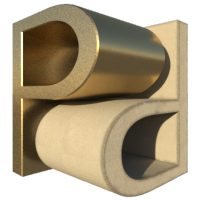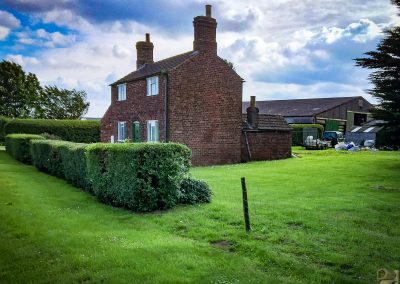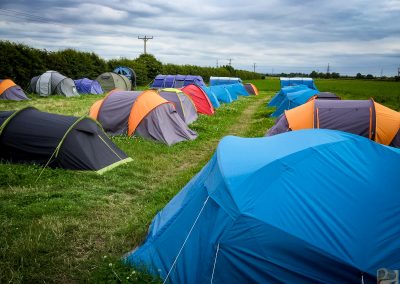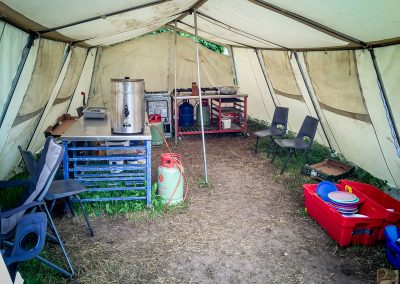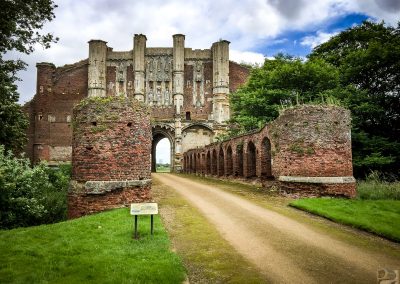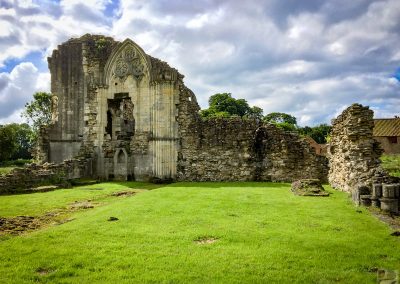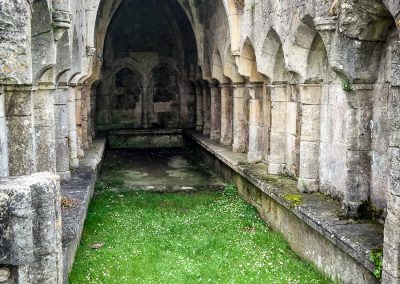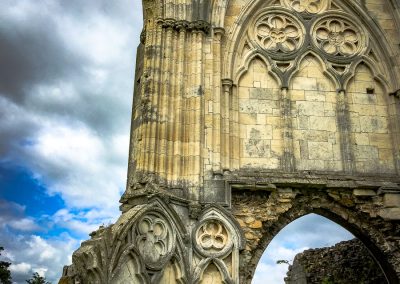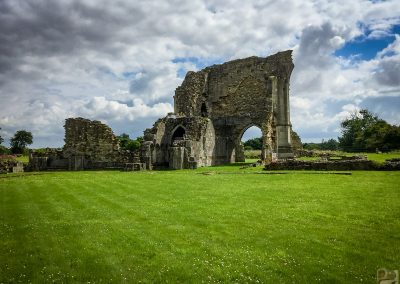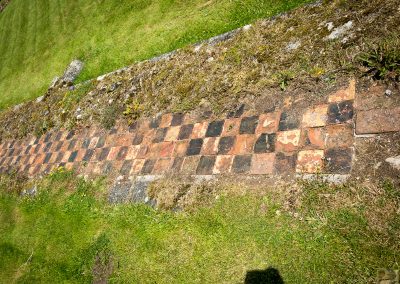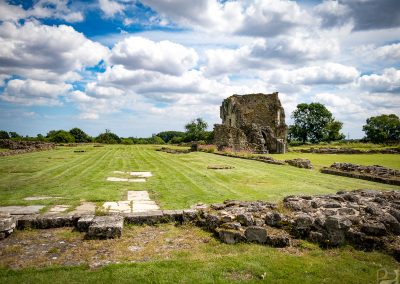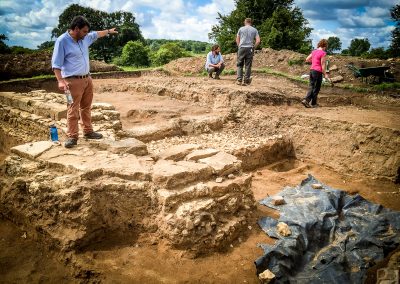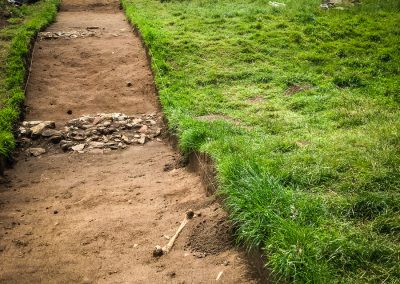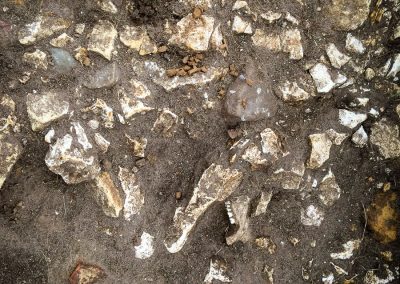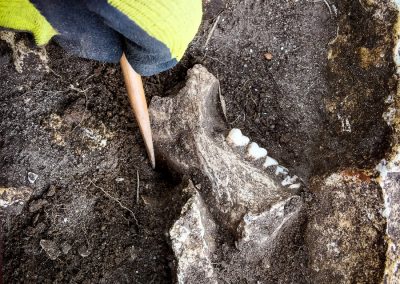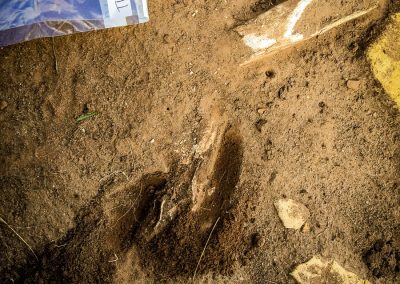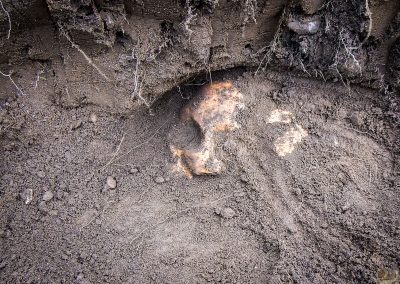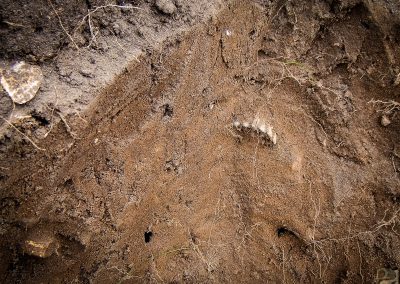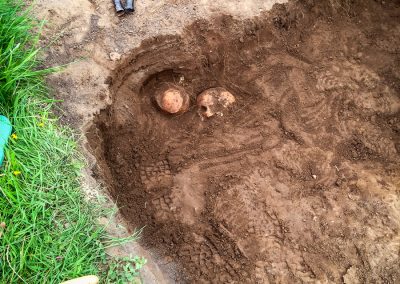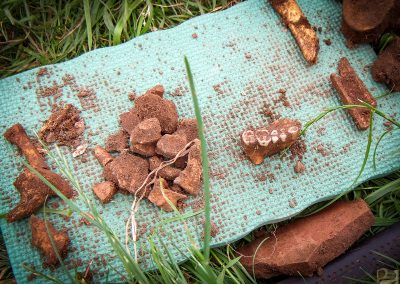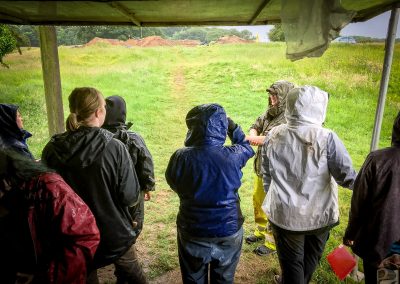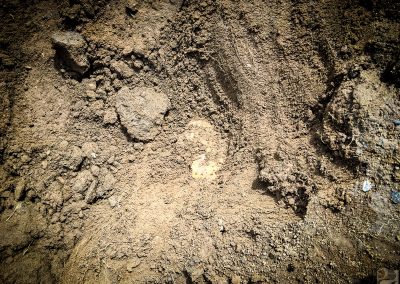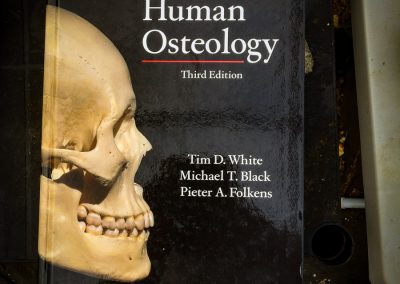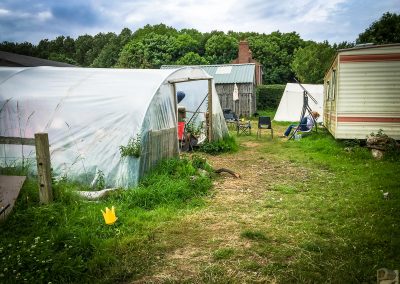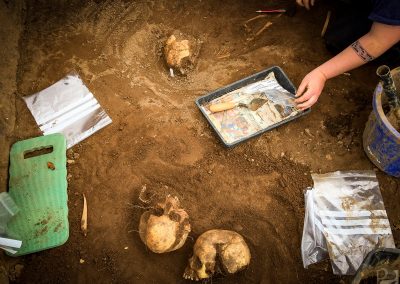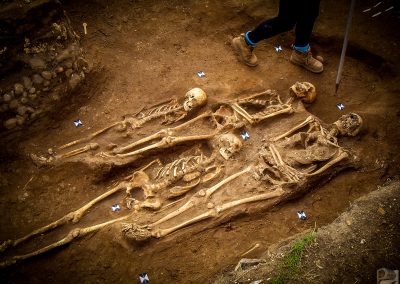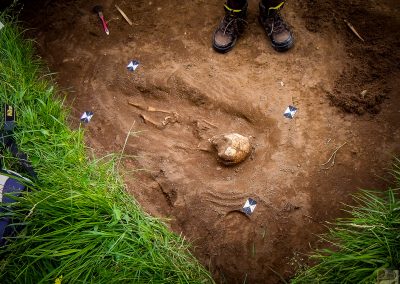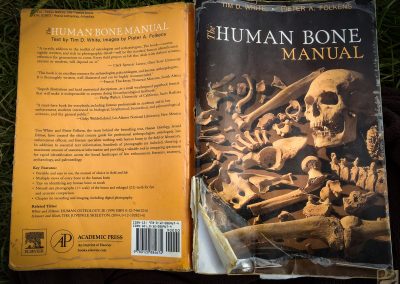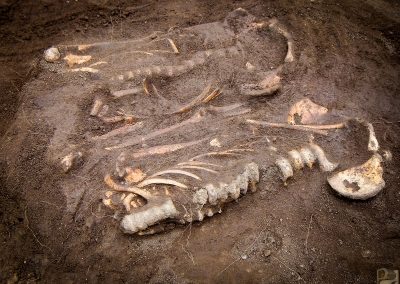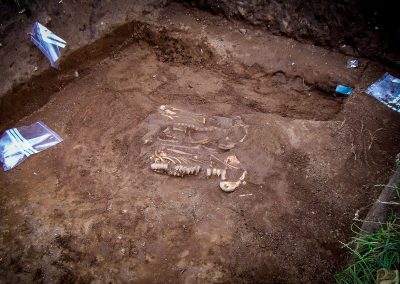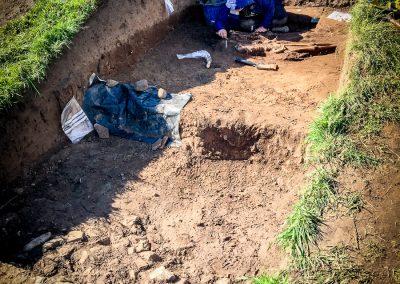Please note: this page contains images of human skeletal remains discovered during the excavation.
Location
http://www.english-heritage.org.uk/visit/places/thornton-abbey-and-gatehouse/
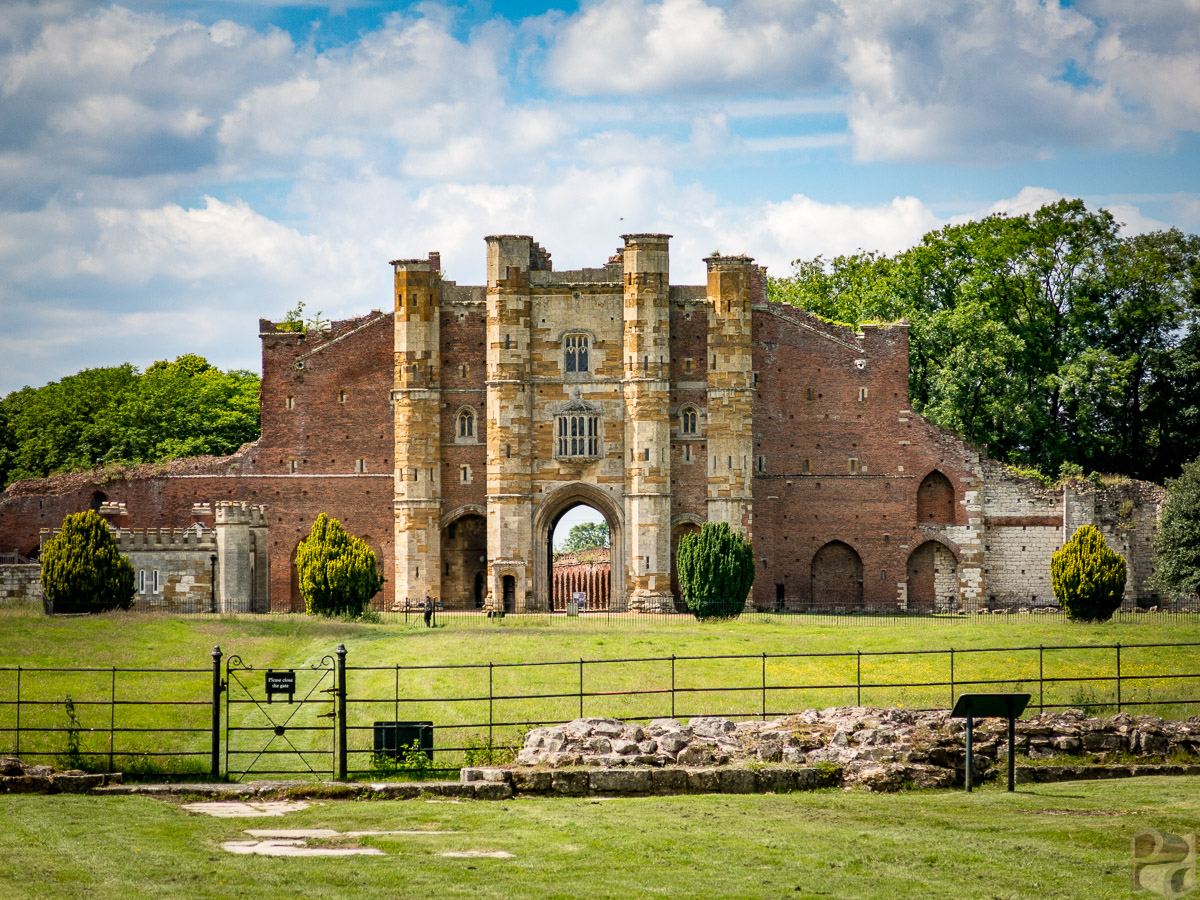
Thornton Abbey
Further Information
The Project has several websites which can be accessed through the following links
The dig site I was involved with is discussed in this page from the Department of Archaeology at Sheffield University.
Medieval Black Death mass grave discovered at Thornton Abbey
Day 1 (Saturday 25th June 2016)
After travelling for around 5 hours by car/train I met up with a few other people going to Thornton at Habrough Station on the last leg before arriving at Thornton Abbey Station where we were picked up by members of the site team and taken to a farm nearby the excavation site. First thing was to get my tent up and get organised while everyone else was arriving. I managed to get the tent up before the heavens opened but was in for a wet night. The nearest pub is a 40-minute walk from camp so not a regular evening venue.
The site staff were all from Sheffield University with all the team members coming mainly from Canada and America except for myself and two others. I believe all team members were studying either archaeology or anthropology at degree level. Some team members had been on-site for the previous two weeks and gave us an insight into what had been going on and how the camp worked.
The campsite was in a field next door to the main farm buildings and included a two-room shower house, kitchen cabin, caravan storing finds, cooking tent, a polytent which was used for socialising, eating and storing bulk finds. The middle open area of the site was used for socialising in good weather and was complete with a large chimenea to huddle around. The polytent which was originally the farmers grow tent was the main area for all to gather on an evening. Being a tunnel construction it did tend to let the wind funnel through but this also made the top end an ideal area for drying clothes.
Saturday is the only day off so no hot food was on offer. Pork pie and salad was for tea and was to be fair it was very nice, having been a long time since I had had a pork pie.
Day 2 (Sunday 26th June 2016)
The first day of the dig for all of us who joined this week. We were all given a quick induction into the camp rules and health and safety. A rota was set up to let everyone know when they were on cooking duty and clean-up duty. Then it was off to the dig site and a tour of the grounds around Thornton Abbey. We were fortunate to be given permission to look around the property whenever we wished within opening hours without paying the normal visitors fees.
The excavation site was situated on the south west area of Thornton Abbey within shouting distance of the gatehouse and visitors entrance. As can be seen in the photographs on this page the layout consists of a main square excavation with the remains of the foundation of one of the original church buildings which was constructed for worship whilst the abbey was being built. It looks as though it was later commissioned as the abbey hospital and potentially took care of the infirm before becoming the final resting place for plague victims. Heading northwards from the main excavation was a trench which at the time of my arrival had only had its topsoil removed in readiness for excavation. It was expected that it would reveal part of the outer chapel wall, which it indeed did, but also, as I would later experience, several burials.
I was initially placed in the SW quarter of the main excavation to clear down to a wall foundation. The weather was quite warm and the wind was blocked by the spoils heap which surrounded the main excavation site. Today was mainly about my acclimatisation to the site, the tools, and the methods used in excavation before moving on to more focused work. No finds of any interest were discovered by me today!
Day 3 (Monday 27th June 2016)
Moved on to the trench today. Had to clean back the surface at the southern end for photographing. This part of the trench is mainly part of an inner enclosure wall and constructed of small stone. However, on close inspection I discovered the right side of a human mandible complete with teeth but no left side. This was part of the wall construction and must have got there whilst the foundations were being dug in antiquity. Other bone fragments were found during the day in the same area and had been smashed in antiquity. All bagged and tagged.
Day 4 (Tuesday 28th June 2016)
Moved on to the northern end of the trench today. As can be seen in the photographs there was a fair amount of charnel close to the surface which was bagged and tagged before I set about lowering the surface with mini mattock and trowel. The trench area is only big enough for two people work so it was a little less congested to work in. In a relatively short time I felt my trowel hit bone and had in fact found my very first human skull which shortly turned out to be two. The positions of the two skulls indicated that they had been relocated in antiquity. In the same context, I found a fragment of pottery but as this was most likely disturbed in the past it would not be of much help in dating. Whilst moving around the side of the trench to clean the cut I discovered what I thought initially was a third skull protruding out of the trench wall, however this later was seen to be a broken maxilla with all teeth intact and nothing else remaining of the skull.
As I was clearing around the two skulls one of the supervisors came over with a digital video camera as the site was to be documented for the television documentary series ‘Digging for Britain’, but whilst I proudly showed off my discovery I’m afraid I never made it to air.
Day 5 (Wednesday 29th June 2016)
Rain stopped play before lunch today but not before we discovered what looks like the remains of an infant burial. The area was covered over with tarps and will be looked at tomorrow once the weather changes for the better.
A few us took the opportunity to go into the nearby village of Barton where I had one of the best pints of beer ever and managed to buy some wine and biscuits for later in camp. On returning to camp the boiler was offline in the shower block so had to wait quite a while before managing to get scrubbed down.
Rained a lot today…!
Day 6 (Thursday 30th June 2016)
The small skeleton we discovered yesterday was excavated further and confirmed as a full infant burial once we cleared away more of the earth. It is difficult not to pause and think about the parents laying their child to rest hundreds of years ago on this spot. Excavating an infant is notoriously difficult as normally most of the remains are so fragile that few can be lifted without crumbling. In this case the remains were more resilient albeit delicate and most of them were successfully excavated.
At this point I felt that I needed to look at my experience with photogrammetry and begin to record the discoveries myself with a view to reconstructing 3D models of the remains before they were fully excavated. My results will be presented on this website as soon as I can get the data processed.
Later in the day I discovered a larger skeleton but the ground level needs to be lowered further before it can be fully excavated.
Day 7 (Friday 1st July 2016)
Found two more skeletons which probably belong to the two skulls I found earlier as they are in the right location, although lower, and are missing skulls. Looks like this is part of a child’s cemetery as the remains are juvenile in size possibly age between 11 and 15; although that will need to be determined back in the lab. Spent the rest of the day slowly and carefully excavating the remains and recording the details on paper.
Further into the centre of the dig there has been a stone coffin lid found which has very well preserved markings so we should be able to determine who it belonged to. It was found on its side so the grave was likely robbed in the past as was the rest of the building.
Day 8 (Saturday 2nd July 2016)
Archaeology gives you the opportunity to see things that haven’t been touched by human hand for sometimes many centuries. Today was our rest day so after getting some much-needed washing done we all went to the pub for the day. TV, Wi-Fi and beer. Oh, the wonders of civilisation!
But then I looked at the menu and had to wonder, where exactly am I? Not sure if any of this will be touched by my human hands any time soon!


